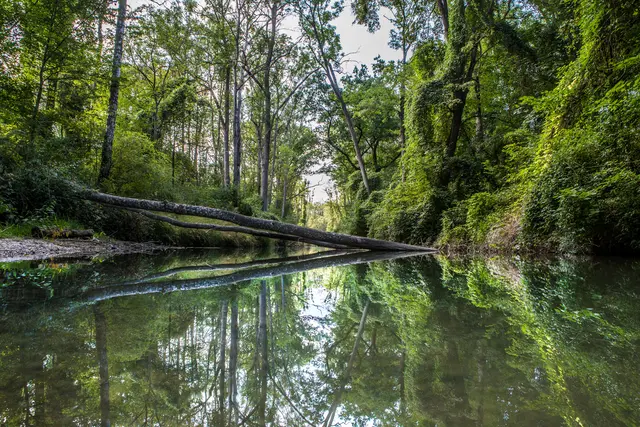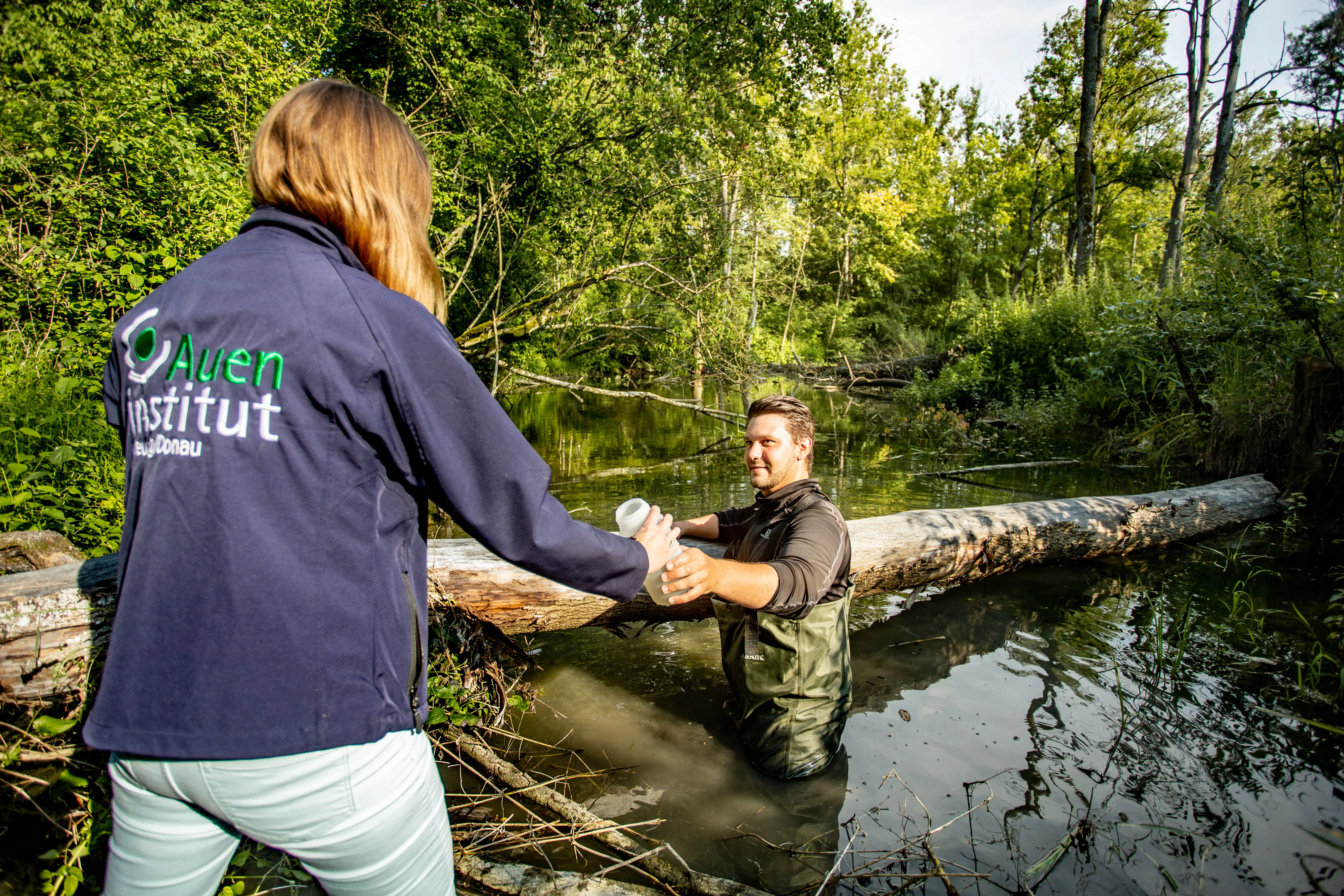Along the Danube between Neuburg and Ingolstadt there is a floodplain forest of about 2000 hectares. This is a remnant of an expansive and wild riverscape whose natural dynamics with alternating high and low waters and fluctuating groundwater levels were lost due to the regulation of the Danube and the construction of barrages. In 2005, the Bavarian Freestate began to create a natural water bypass of a length of eight kilometers within the remaining floodplain forest - the stream Ottheinrichbach. Newly constructed diversion points in the embankment of the Danube ensure so-called “ecological flooding”, which is intended to turn the forest back to the state of a near-natural floodplain forest. This has created a new habitat for humidity-loving animal and plant species.
Habitat for endangered species: Aueninstitut continues monitoring along the banks of the river Danube

But how successful have these measures been? Have the plant and animal species typical for floodplain forests been able to reclaim their habitat? Or have alien animal and plant species, so-called invasive species, colonized the forest? What is the condition, structure and moisture content of the soil? From the beginning, the renaturation project of the Ingolstadt Water Management Office has had scientific support. From 2009 to 2014, the Aueninstitut of the KU has conducted research in collaboration with TU München, Hochschule Weihenstephan-Triesdorf and Fachhochschule Osnabrück. A team of 25 researchers - geographers, foresters, animal ecologists, vegetation ecologists and fish biologists have researched the impacts of the dynamization measures on water, soil, animal and plant life for five years.
"Our investigations have shown many positive developments in the response of plants and animals to the measures,” says the head of the Aueninstitut, Prof. Dr. Bernd Cyffka. Now that habitats for water-bound creatures have been increased, the number of species among water plants and fish has increased and bird life has become more diverse. “These are encouraging signs and experiences that let us draw conclusions for other river areas in Germany and Europe, says Cyffka. A higher frequency and duration of “ecological flooding” could further strengthen the positive development. “More water in the floodplain forest” is a useful motto in cases where suffering floodplain ecosystems are to be revitalized, he adds.
![[Translate to Englisch:] Untersuchungen](/fileadmin/_processed_/9/f/csm_Aueninstitut03_d883ec970a.webp)
The research done as part of the MONDAU project, which has attracted attention of national as well as international experts, show that it takes time for nature to reclaim the floodplain forest even in its renaturated state. Bird and fish species have come back soon after the first floodings, beetles and other insects a little later. The lower the mobility of the species, the longer it takes until positive changes can be seen. It follows, that for tree species this is an especially long process. All the more important it is therefore to the researchers to ensure a long-time monitoring of the project to dynamize the Danube floodplains. “It is a problem that the impacts of measures are often only studied for a short time. What it really takes are long-term observations, as many of the processes initiated as part of the dynamization take their time,” says Cyffka.
After 2015, the investigations at the floodplain forest next to the castle Grünau, where the Aueninstitut and the Auenzentrum are located, have been limited to aspects of water and to forest vegetation. Only those parameters were collected that the Aueninstitut could manage with its own manpower. Now the German Federal Agency for Nature Conservation is once more funding a broad-based monitoring project - again involving researchers from other disciplines and institutions. The Aueninstitut of the KU is devoting itself to fluvial morphodynamics - in other words the question, of how running water changes the form of a river bed. In addition, Aueninstitut employees research soil humidity, groundwater levels and the vegetation in forests, water and on riverbanks. The Aueninstitut is also taking on project coordination. The Institut für Biodiversitätsinformation is researching the arthropodes in the floodplains, in particular beetles. The Gesellschaft für Landschaftsökologie, Gewässerbiologie und Umweltplanung is taking a closer look at the development of mollusks and the department for aquatic system biology of TU München will try to find out which fish species in what numbers have found a new habitat in the floodplain forest. The aim is to have usable data by 2023, which will then be compared with the data from 2014.

![[Translate to Englisch:] Grünau](/fileadmin/_processed_/1/1/csm_Auenwald_04_316f35b425.webp)
![[Translate to Englisch:] Untersuchungen](/fileadmin/_processed_/3/f/csm_Aueninstitut01_728b4d4612.webp)